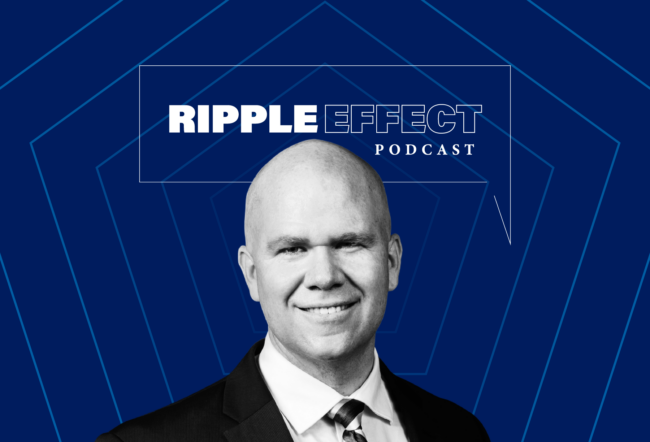The world economy looks stronger than it has in recent years with almost every region expected to improve its performance over 2017. And much of Asia, as usual, is slated to turn in some of the strongest numbers. To gain a view of what where private equity may heading in China and Southeast Asia, Knowledge at Wharton asked Kosmo Kalliarekos, managing director and chair of portfolio management for Baring Private Equity Asia (BPEA), for his views on a range of related topics, including the view from his own firm. Baring, founded in Hong Kong in 1997, today has total committed capital of more than $10 billion.
An edited transcript of the conversation follows.
Knowledge at Wharton: What areas of the region is Baring most involved in? How do you see that evolving?
Kosmo Kalliarekos: BPEA is one of the few local private equity funds with a truly pan-regional presence. We have 145 people across eight Asian offices in six countries covering Hong Kong, China, Southeast Asia, Japan, Korea, India and Australia, and our latest fund has investments in all of those geographies. One of the biggest benefits of being pan-regional is that we have the ability to allocate capital to the regions, sectors or investments that we feel offer the best risk-adjusted returns at any given point in the cycle. We can adjust our strategy in response to macro or political events if required.
But private equity requires you to invest for the long term – our funds have a 10-year life and individual investments will generally be held for a four- to five-year year period or more — so that means we’re taking a long-term view on those countries. We don’t see that strategy evolving much in the coming years and we’ll look to construct diversified portfolios in all of our funds, but the individual country weightings will inevitably change depending on the vintage.
One area that has become a meaningful part of our program are what we call “cross-border” deals, which can be either Asian-headquartered companies looking to expand outside of Asia or global companies looking to grow within Asia. Given the higher rates of growth within Asia and the increasingly large and sophisticated Asian companies that are able to compete globally, we see this as a trend that will most likely increase in the future.
Knowledge at Wharton: Tell us about the opportunities for PE in China. With major economic plans on the boards for the years ahead, such as “One Belt, One Road” and the transition from an export-led to a consumer-lead economy, it would seem many new avenues are opening up.
“For one company its target market could be a single demographic group within one country, but for another it might be looking to grow all around Asia or the world.”
Kalliarekos: China has always been important for our funds, and as the largest economy in the Asia Pacific region it is simply too big to be ignored. If you look back over our 20-year history, China has been a big component of our returns, especially in our earlier funds.
But there has been a huge evolution in the market over the past 10 years so what you’ve seen is a change in the drivers of those returns. It used to be high-earnings growth rates of companies because the country itself was growing at 10%-20% nominal GDP growth, and when you combine that with multiple arbitrage through inefficient capital markets, it was relatively easy to generate decent returns. That has all changed today. The country is still growing, but at 6% it’s not giving you the same tailwind that it was in the past, and as a result you need to work a lot smarter and harder to achieve your returns – control deals, operational value creation, bolt-on acquisitions, DCM (debt capital markets) – not just relying on the market to do the work.
One of the other challenges is finding qualified management talent in China and elsewhere in the region, because strong leadership is critical for every single investment that we make. There is an increasing number of experienced CEOs that have successfully worked alongside private equity firms but the pool is still relatively shallow today.
We’re excited about policies that integrate China with the rest of the world, such as “One Belt, One Road”, as it opens up opportunities for Chinese businesses to benefit from global trade. It fits very well within our “cross-border” deal focus. The transition to a consumer-led economy has been going on for a while and we think it will take a while before it is truly consumer-led, but we are focused on the consumer- and service-related sectors, and in particular branded, overseas products that appeal to consumers who are increasingly focused on quality rather than price.
Knowledge at Wharton: What sectors will offer the most opportunity?
Kalliarekos: We’re sector-agnostic and typically assess a business first, followed by the sector. In a target company we’re generally looking for a scale business with predictable earnings and cash flows, a long history of earnings growth, high returns on capital employed and strong management teams, and operating in industries with favorable growth prospects and high barriers to entry. The challenge is that leading companies in today’s “hottest” sectors such as consumer, tech and healthcare often command very high valuations, and we’re always reluctant to pay lofty multiples to chase growth.
We’ve been able to find some fantastic businesses that meet our target attributes and at very reasonable multiples. Our average entry multiple over the past 12 months is less than eight times EV/EBITDA [economic value/earnings before interest, taxes, depreciation and amortization]. We’ve been able to do this by looking at ancillary sectors to the higher-growth industries, such as business services, information services and packaging.
Knowledge at Wharton: How do you plan for shifting demographics in the region? While China is aging, much of the rest of the region has a very young population.
“In Japan we’re seeing a lot of deal flow from corporate divestitures and succession issues, which is being driven by an ageing population”
Kalliarekos: The Asian region is extremely diverse, but it’s not just demographic trends that separate the countries. You have different languages, different cultures, different tastes in fashion, food and music, diverse histories and hugely divergent levels of government influence. That’s only just scratching the surface. We’re not searching for businesses that will appeal to every consumer in every country, but will seek to build a portfolio of companies around the region that should succeed in each of their respective target markets.
For one company its target market could be a single demographic group within one country, but for another it might be looking to grow all around Asia or the world. We have a team of 145 people from 15 nationalities speaking 16 different languages, and that provides us with tremendous insights into the Asian countries in which we operate. We believe that understanding the local markets, including the shifting demographics, provides us with a great opportunity to take advantage of the unique trends in those markets.
For example in Japan we’re seeing a lot of deal flow from corporate divestitures and succession issues, which is being driven by an ageing population. Our Japan team is actively talking with a number of groups to potentially help them overcome such issues. You can contrast that with the Philippines where we’ve invested in a company in the BPO (business process outsourcing) space, and the growth of that company is supported by a young, educated population. The headline returns of both situations may be similar, but your approach will be very different, as will the drivers of those returns. It takes a local team to succeed in both situations.
Knowledge at Wharton: What is the landscape for PE in Southeast Asia, for example, the influence of urbanization, a growing middle class and other major factors?
Kalliarekos: Within Southeast Asia it’s important to differentiate between the more developed countries such as Singapore and the developing countries such as the Philippines, Indonesia or Vietnam. Singapore is a big economy that acts as a regional hub, it has a well-established and well-capitalized stock market and has a lot of attractive companies that are large enough to be attractive to us. It also often acts as the headquarters for a company that has operations in multiple countries within Southeast Asia. For these reasons we’ve historically been very active in Singapore, either through standalone investments or using it to access the higher growth economies throughout Southeast Asia.
We’re very excited about the potential of the developing markets due to many of the trends you identified such as urbanization, the growing middle class and the regional free trade agreement. The ASEAN countries have a combined population over 600 million people and is approaching 10% of the world’s population. GDP growth rates in many of these countries are among the highest in Asia. Unfortunately due to the stage of development there are fewer large businesses in those markets that meet our requirements, though they do come up from time-to-time.
“We’re more likely to access Southeast Asia through platform or consolidation investments where we can build scale through the combination of multiple companies in one or more countries.”
We’re more likely to access Southeast Asia through platform or consolidation investments where we can build scale through the combination of multiple companies in one or more countries. We’re currently doing that with a healthcare business in Indonesia which we expect to be a beneficiary of the growing middle class and increased discretionary spending on healthcare. The region is also important for expansion of the companies we own in other countries, for example through bolt-on acquisitions or organic expansion into new markets.
Knowledge at Wharton: How would you characterize the kinds of deals being done and their size over the last year or two, in China for instance, and how do you foresee the nature of deals changing over the next two to five years?
Kalliarekos: Over the next two to five years we’d expect attractive deal flow to increase in these countries as the markets themselves develop, and SME’s grow into country or regional champions. Business owners in Southeast Asia are also very commercial and there are fewer issues around things like generational change / succession, so we’re confident that these markets will deliver some great opportunities in the future.
China is quite different. It has been incredible to see the emergence of the large cap buyout market in Asia over the past few years. There was over $50 billion of transaction volume in the large cap buyout space in 2016 which was more than double the amount in 2015. Much of that was in China. We believed this would be the case when we raised our latest fund in 2014-2015 and the amount of deal flow we’ve seen in that space in the last few years really vindicates that view.
Going hand-in-hand with the development of the large cap market is the availability of leverage finance to complete the transactions, and that was not necessarily the case four to five years ago. Notwithstanding any external shocks, we believe there is potential for this to become a long-term feature of the market.
Knowledge at Wharton: The experience of IPOs in China has been checkered – off, on, then off or slowing again. What do you see over the next couple of years?
Kalliarekos: We have very rarely invested into companies where the intended exit route is through the domestic Chinese market. Before investing we always identify multiple exit paths, and the probability of each is tested during our investment committee meetings. Domestic Chinese IPOs can often achieve extremely attractive valuations, but the uncertainty over the IPO windows, currency controls and issues surrounding foreign ownership often make them unreliable exit paths for our companies.
We would therefore prefer to list the companies in Hong Kong, and have done this frequently over our history. That said, we have observed the Asian public markets underperforming their Western counterparts in recent years, and today the average P/E multiple of the S&P500 is about 30% higher than in the MSCI Asia index. We’re therefore being more selective about exiting through the public markets, and at the same time think it’s a good time to be looking for potential take private opportunities.



